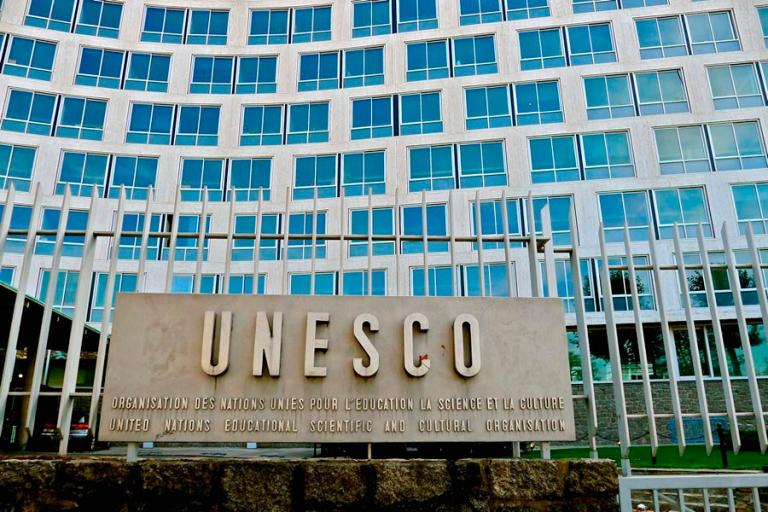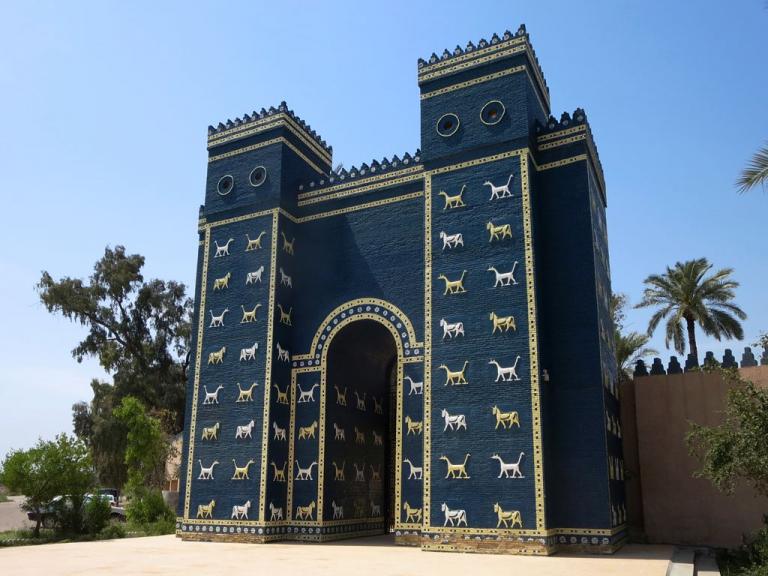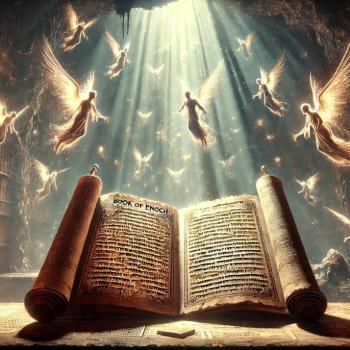 UNESCO–the United Nations Educational, Scientific and Cultural Organization–recently added 29 new locations to its World Heritage List of now over 1,000 sites throughout the world. This designation guarantees their preservation as the greatest sites in the world. Among these new 29 designations are the ruins of the ancient city of Babylon. This site is located next to the city of Hillah in central Iraq. It is on the Euphrates River and about fifty miles south of Bagdad, which is the capital of Iraq.
UNESCO–the United Nations Educational, Scientific and Cultural Organization–recently added 29 new locations to its World Heritage List of now over 1,000 sites throughout the world. This designation guarantees their preservation as the greatest sites in the world. Among these new 29 designations are the ruins of the ancient city of Babylon. This site is located next to the city of Hillah in central Iraq. It is on the Euphrates River and about fifty miles south of Bagdad, which is the capital of Iraq.
Babylon was for a long time the greatest city in the ancient world. It was often the capital of the ancient Assyrian and Babylonian empires. German archaeologists first began exploring and digging the ancient ruins of Babylon in the nineteenth century. There was a noticeable tel (large mound) there which signified ancient ruins were buried underneath. There are many such mounds scattered throughout Iraq, which has the richest array of buried ancient ruins of anywhere in the world. This should come as no surprise since Iraq was the very heartland of “the breadbasket of the world” in ancient Mesopotamia, which is located between two great rivers, the Euphrates and the Tigris.
Babylon was the capital of Neo-Babylonia’s greatest king, King Nebuchadnezzar II. He was the one who attacked Israel multiple times during the late seventh and early sixth centuries BCE and deported some Israelites to Babylon. Jews call this The Exile. It lasted seventy years, just as Jeremiah the prophet had predicted (Jeremiah 25.11-12; 29.10; cf. Daniel 9.2). Then some Jews returned to their ancestral homeland (Ezra 1, 7); Nehemiah 1-2). Even today, many baked bricks at the ruins of the city of Babylon can be seen with King Nebuchadnezzar II’s name inscribed on them.
Several great leaders have wanted to make the ancient city of Babylon the capital of their empire or to restore it to its former grandeur. Alexander the Great is the most known for this. He died at Babylon in the palace of Babylonian King Nebuchadnezzar II at the young age of thirty-two years. The cause of his death has been much disputed.
In recent times, Iraq’s President Saddam Hussein had a pet project of restoring the ruins of Babylon to become a great city again and a tourist destination. He was trying to do this until he was captured after the Second Persian Gulf War and executed. Like his hero King Nebuchadnezzar II, Saddam Hussein was restoring some of ancient Babylon with new bricks that he had made and engraved with his name on them. Among other things, Hussein had the famous Ishtar Gate at Babylon restored, which can be seen today.
I have had a fascination with the history of the ancient city of Babylon and its present ruins since I was twenty years old. That’s when I bought Clarence Larkin’s large book, Dispensational Truth (1918, 1920), with his many drawings and charts depicting Bible prophecy. He had been a draftsman in business and then a Baptist pastor. In this book, Dispensationalist Larkin taught that Revelation 18–which predicts the city of Babylon will be the greatest city on earth by the end of the age–should be interpreted literally. I have always believed this ever since reading Larkin’s book and others by him.
As a result, I have a book manuscript I’ve written about Babylon as it is described in mostly Revelation 18. I actually started this manuscript in the 1970s. I intend for it to be book #4 in my Still Here series on biblical eschatology. Book #1, The Third Day Bible Code (2006), and Book #2, Warrior from Heaven (2009), are already published. I intend for Book #3, The Late Great Plastic Empire, to be published next year at amazon.com’s Kindle Direct Publishing. I’m hoping the next three or four Still Here books will each be published a year apart since these manuscripts are half-finished or more. I expect that the only thing that could somewhat derail this plan is my invention business.
So, yes, I believe the ancient city of Babylon will someday be restored to become “the great city,” which is stated four times (Revelation 18.16, 17, 19, 21). It will then be destroyed by God in an instant in a cataclysmic upheaval at the end of the age. When this happens, the author of Revelation further predicts that men will lament over its demise and exclaim, “What city was like the great city?” (Rev 18.18), signifying that there was none.
Many Bible scholars and readers argue with this literal interpretation, asserting that this prophecy refers completely to the city of Rome during the first century CE. I intend to thoroughly address this issue in my book with what I think will be received as a compelling interpretation that somewhat bridges the futurist (I’m pretty much a futurist on biblical eschatology) and the preterist interpretations of Revelation 18.













